
Radiant Cold Surfaces – The Foundation of a Superior Cooling System
At the heart of our innovative cooling technology lies Radiant Cold Surfaces, delivering unmatched comfort, efficiency, and air quality. Unlike conventional air conditioning, which relies on forced airflow, our system operates silently, without drafts or noise, ensuring a completely natural cooling experience. By using chilled water circulating through ceilings, walls, and floors, the system absorbs excess heat rather than pushing cold air into the room, creating a balanced and pleasant indoor climate.
One of the biggest advantages of Radiant Cold Surfaces is the elimination of ductwork maintenance. Without air ducts, there is no need for regular cleaning, no dust accumulation, and no breeding ground for mold and bacteria. This results in a healthier environment, free from allergens and airborne pollutants. Additionally, our closed-loop hydronic system ensures zero water waste, making it more sustainable and cost-effective over time.
According to Center for the Built Environment of Berkeley University of California research, radiant cooling is significantly more energy-efficient than traditional HVAC systems. It consumes 30-40% less energy, reducing operational costs while maintaining superior comfort. The absence of noisy fans and compressors means you enjoy an absolutely silent cooling experience, free from the low-frequency stress caused by traditional AC units.
Designed for the extreme heat of the Middle East, our system is built for long-term reliability, requiring minimal maintenance while providing continuous, even cooling without temperature fluctuations. With Radiant Cold Surfaces, you get an advanced cooling solution that is quiet, efficient, and maintenance-free, redefining indoor comfort for modern living.
Cold Ceilings
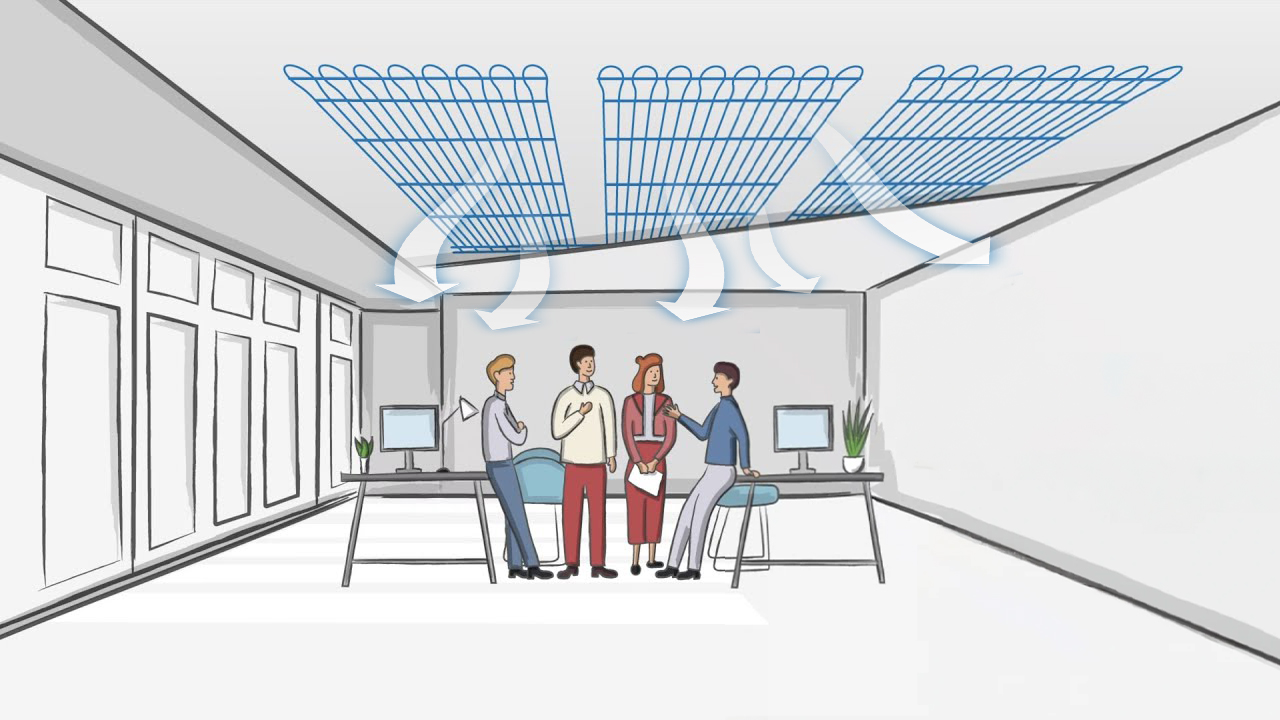
Cold ceilings offer a flexible and adaptable solution, allowing efficient cooling across large spaces while accommodating architectural obstacles and integrating additional ceiling elements like lighting and other engineering systems. They do not interfere with the installation of other ceiling-mounted systems, provided that these are planned in advance during the design stage.
Cold ceilings are the core of the entire radiant cooling system, as they cover the largest surface area. In radiant cooling, just like in any other cooling system, the key factor is maintaining the right ratio between the cooled air volume and the kilowatts of cooling capacity. Each square meter of cold ceilings generates 65 to 90 W of cooling, not only through natural convection, which accounts for just 30-40% of the cooling capacity, but also through radiant cooling, which surprisingly contributes as much as 60-70% of the cooling capacity.
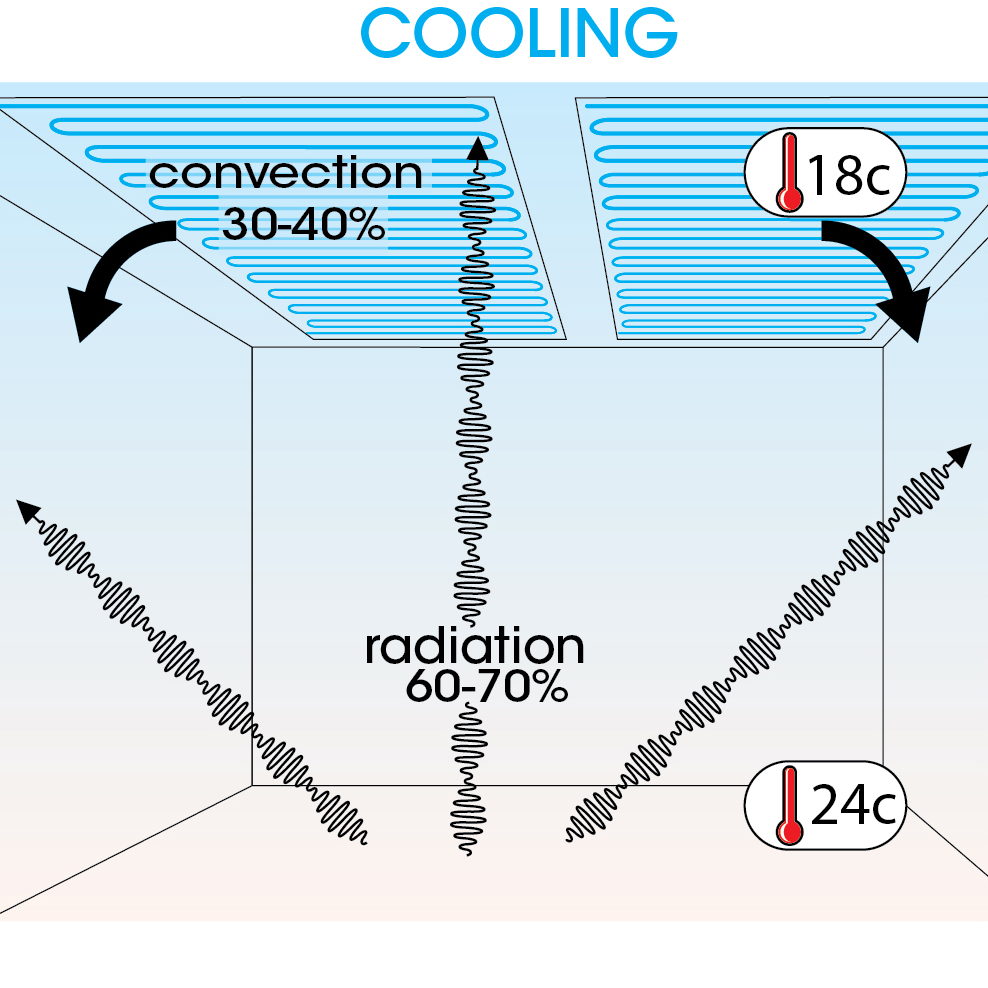
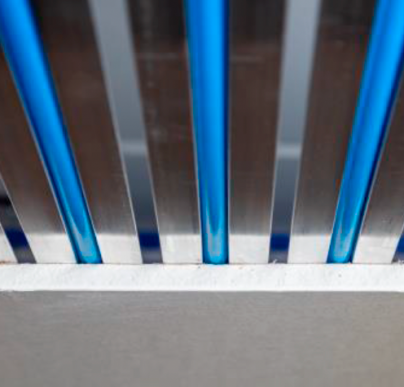
Cold ceilings offer a flexible and adaptable solution, allowing efficient cooling across large spaces while accommodating architectural obstacles and integrating additional ceiling elements like lighting and other engineering systems. They do not interfere with the installation of other ceiling-mounted systems, provided that these are planned in advance during the design stage.
The system is installed on a standard CD profile for Knauf drywall ceilings and is easily covered with standard gypsum board sheets. Unlike pre-manufactured radiant ceiling panels, Knauf ceilings with integrated cooling elements have no weak connection points, ensuring a seamless and durable appearance throughout their lifespan. This system provides maximum surface coverage, guaranteeing the highest cooling efficiency.
Cold Walls– A Crucial Addition to Radiant Cooling
Cold walls cannot serve as the primary cooling source, but they play a vital role in the system. Their main function is to provide additional cooling capacity for the entire radiant cold system. However, their most important task is to prevent heat from entering the room through the building’s external walls, especially on the sun-exposed side.
The installation of cold walls is less labor-intensive and requires fewer accessories and substructures compared to other cooling elements, but proper pipe placement is essential. The pipes are then covered with a layer of plaster, which also serves as a heat distribution surface.
Once installed, the walls can accommodate various interior elements, but to avoid damage to the system components, any modifications must be carried out under the supervision of our specialists.
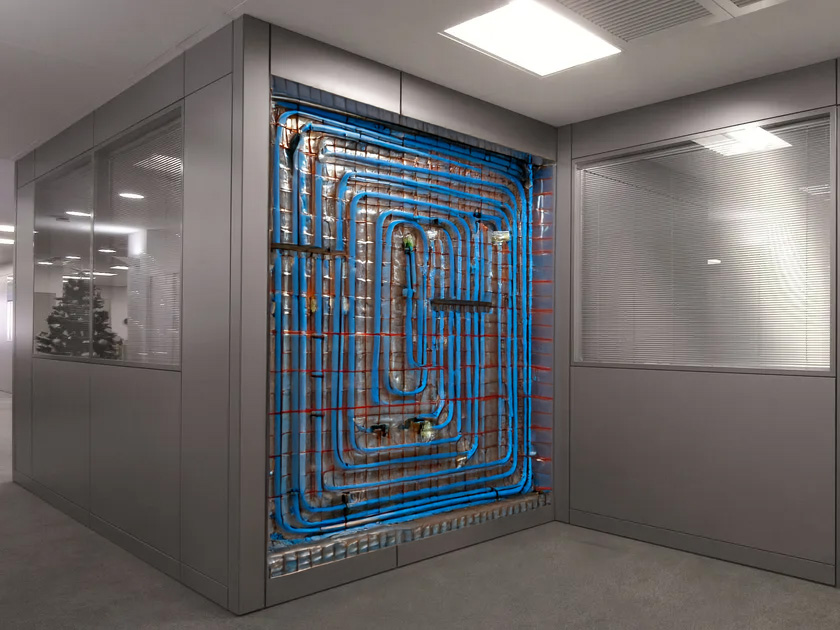
Cold Floors – A Reliable Cooling Reserve

Cold floors serve as a dependable backup for cooling capacity when there is insufficient space for other radiant surfaces, such as in homes with large glass facades or exceptionally high ceilings, like double-height living areas.
For maximum efficiency, cold floors should be embedded in a thermally insulated screed, preventing energy loss to the building’s structural concrete or external walls. They can also be integrated during the slab pouring stage, though this may slightly reduce their effectiveness.
Cold floors work best with tile or stone finishes, which enhance their cooling performance. However, for ultimate comfort, wooden flooring installed on clips offers an optimal balance of cooling and coziness.
Outdoor Radiant Cooling by DERVOSS
DERVOSS brings the comfort of radiant cooling to outdoor environments with specially engineered surface cooling solutions for terraces, pergolas, poolside lounges, and shaded walkways. Using the same chilled-water technology as our indoor systems, outdoor radiant cooling panels lower the perceived temperature without air movement or noise—ideal for open-air dining, hospitality, and high-end residential settings. Designed to withstand harsh sun and humidity, these systems offer silent operation, architectural integration, and year-round comfort even during peak summer heat.
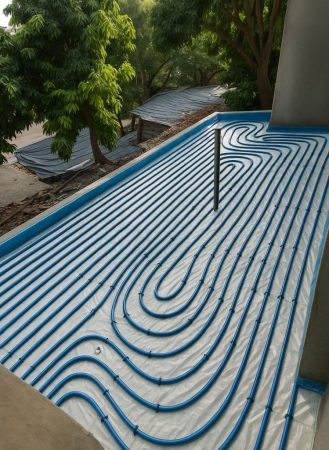
And Finally, the Essential Air Treatment System
Last but not least, the air treatment system is an indispensable component of the entire radiant cooling solution. Its primary function is to prevent condensation from forming on radiant cold surfaces. This is a DERVOSS innovation, designed not only to control indoor humidity and eliminate the risk of dew point formation but also to act as an all-in-one system that ensures clean and fresh air for the health and well-being of occupants.
These units completely replace all traditional air supply, cooling, and purification systems, including ERV, AHU, FAHU, and others, making them the ultimate solution for air quality and climate control. Learn more>
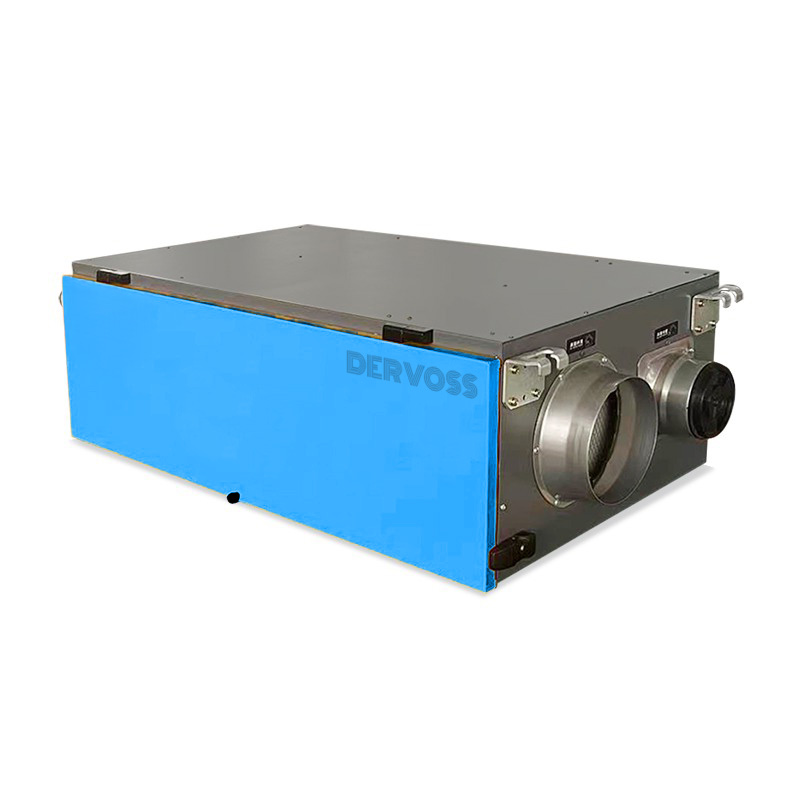
As a Result

No Air Movement

Healthy Environment

Noise Free

Sustainable and Efficient
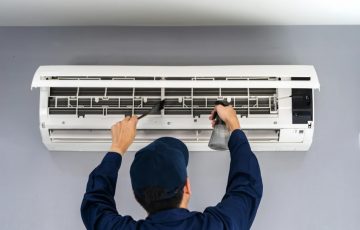
Maintenance-free
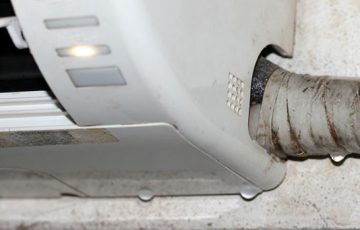
No Water Drain
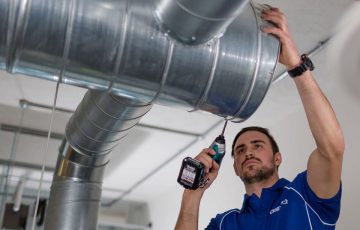
Space Saving
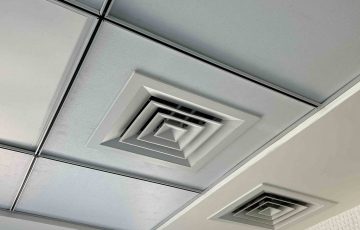
Sleek Design
Or Send Your Request